The currently comes with a free Saya to protect the blade. In the box, you get a cleaning cloth and some instruction manuals. The knife is also well protected with a plastic knife sheet. The tip and the heel also come with some edge guards.

Dongsun Aesthetics
The knife comes with three-layer construction, a very visible cladding, and a matt finish. The handle is made from G10 and comes with a mosaic rivet.

AUS10 Core Material
The comes with a Japanese AUS10 core, and during my testing, the knife Rockwell came close to 61. Keep in mind that the AUS10 is quite brittle and should not be used to slice through frozen food, bones, cheese, or hard bread, or force your way through other food like nuts.
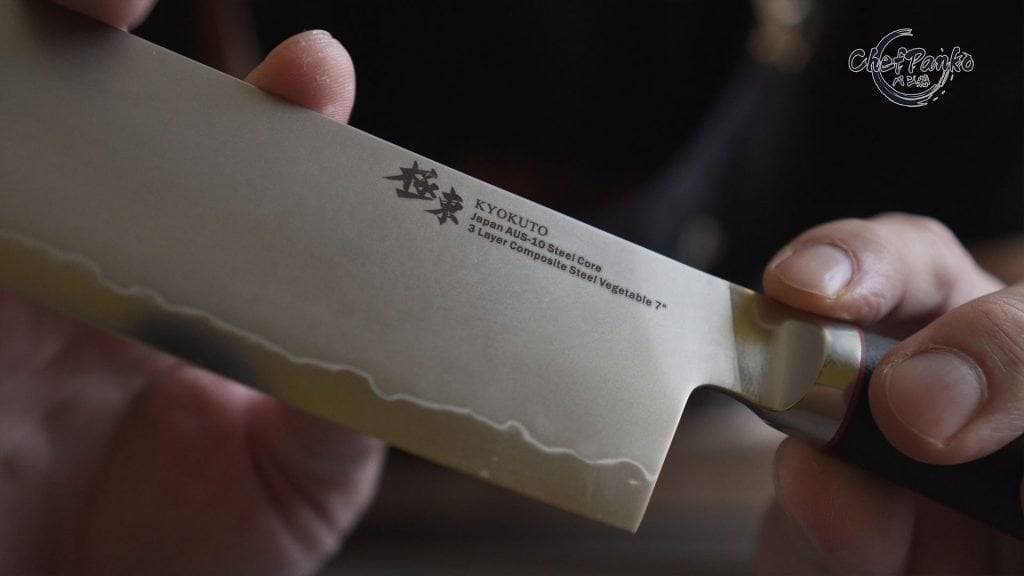
Edge durability & sharpened angle
The knife is sharpened at a 15-degree angle per side. This angle is great for durability and does not affect the sharpness, and even increases the edge retention. There will be less bending and chipping if you go through harder, denser food like root vegetables. I encourage more Japanese-style knives and brands to follow Dongsun’s example instead of advertising with an angle lower than 15 to increase sales.

Edge Retention
With an angle of 15 degrees and a Rockwell of 61, the knife can hold the edge for around 6 to 7 months with regular honing sessions before needing whetstone maintenance.

Weight and Spine tapering
The knife weight is 247grams which is quite on the heavier side of a Japanese-style knife of 7 inches. The knife also has distal spine tapering with 2.1mm at the heel, 2.0mm at the middle, and 1.9mm at the front.
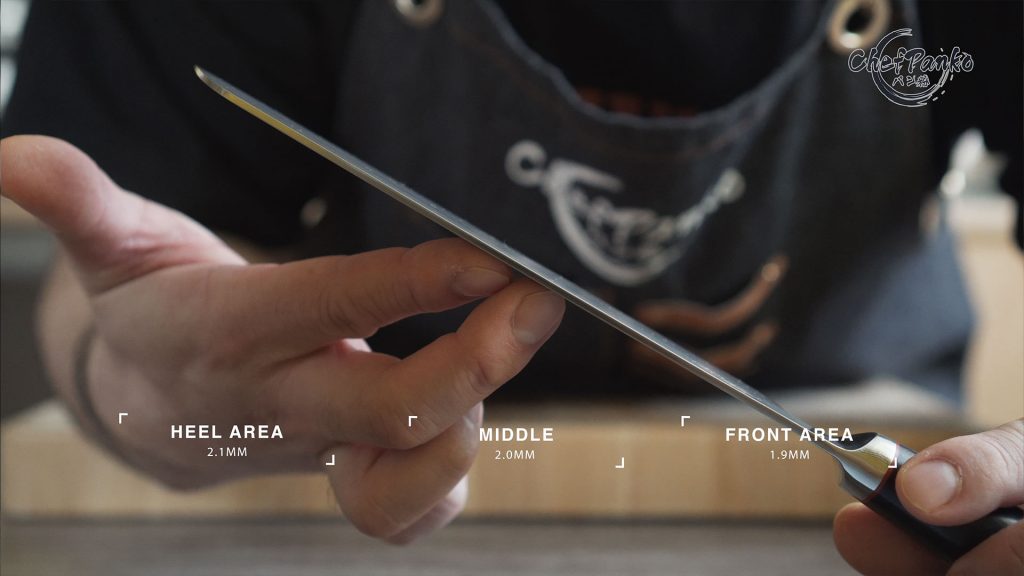
Dongsun Knife handle
The knife comes with a D-shaped G10 handle that does not require any maintenance. The front cap is nicely shaped for a pinch grip at the front of the cap. The D-shaped handle rests nicely at the top of your palm and provides enough grip. Keep in mind that this D-shaped handle is designed for right-handed use.
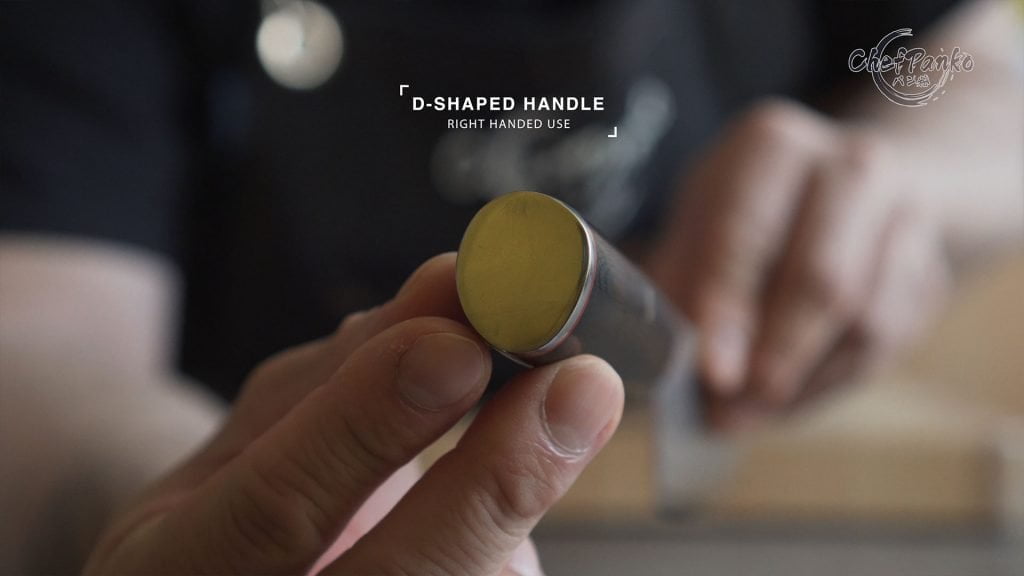
Knife balance point
The balance point is exactly at the front of the cap where you pinch the knife. It makes the knife middle balanced, which works very nicely with the profile.

Dongsun Blade profile
The Profile of this Vegetable Cleaver is the most exciting part. It has a very gentle curve, which makes it enjoyable to use in multiple ways without discomfort.
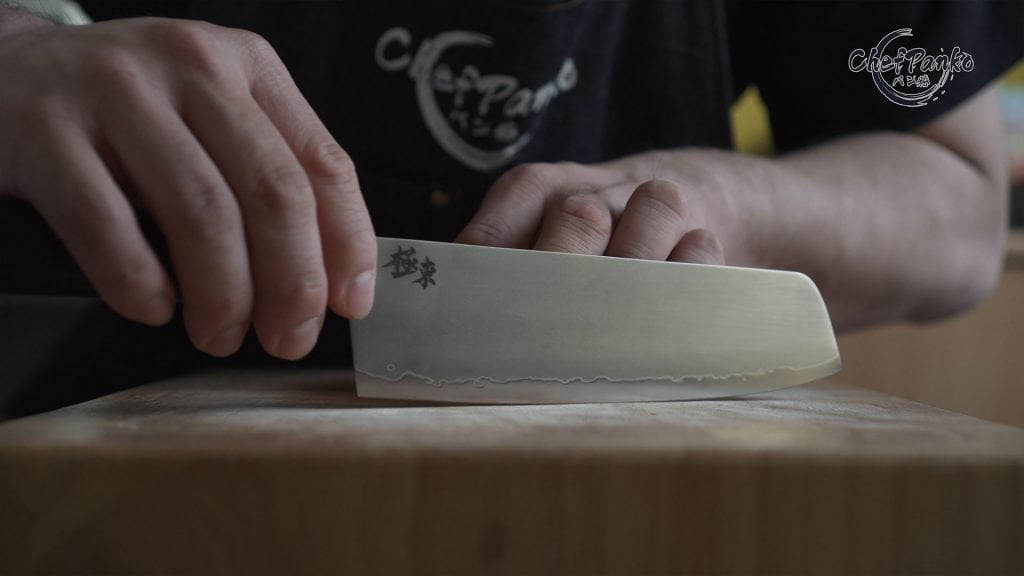
Up and Forward Chop
You can make the up and forward motion without having to curve your wrist. It makes it very comfortable to use, and the performance is similar to a Nakiri.

Tip work, up and down motion, and slicing
The front area has a slightly aggressive curve, which works very well for working with the knife’s tip. Unlike the rounded tip of a Nakiri, this knife has a tip that performs like a Santoku. This also makes it very comfortable for slicing work.
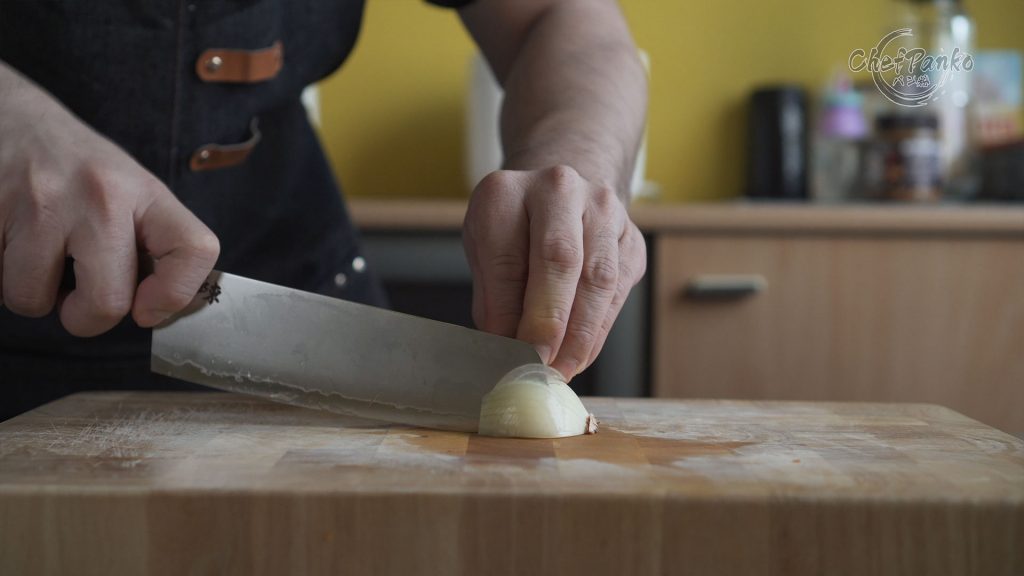
Rocking Motion
The knife also has a gentle curve at the heel, so you can still rock with the blade just like a Chef’s knife. Combined with the aggressive curve at the front, you can rock it higher than a Santoku.

Final Conclusion and my Recommendation
This Japanese-style vegetable cleaver from Dongsun has my recommendation. Despite the unique design, they manage to make it comfortable in many aspects, and it is very versatile. There are no noticeable quality control issues, no protrusions, or sharp edges. There is also enough knuckle clearance.
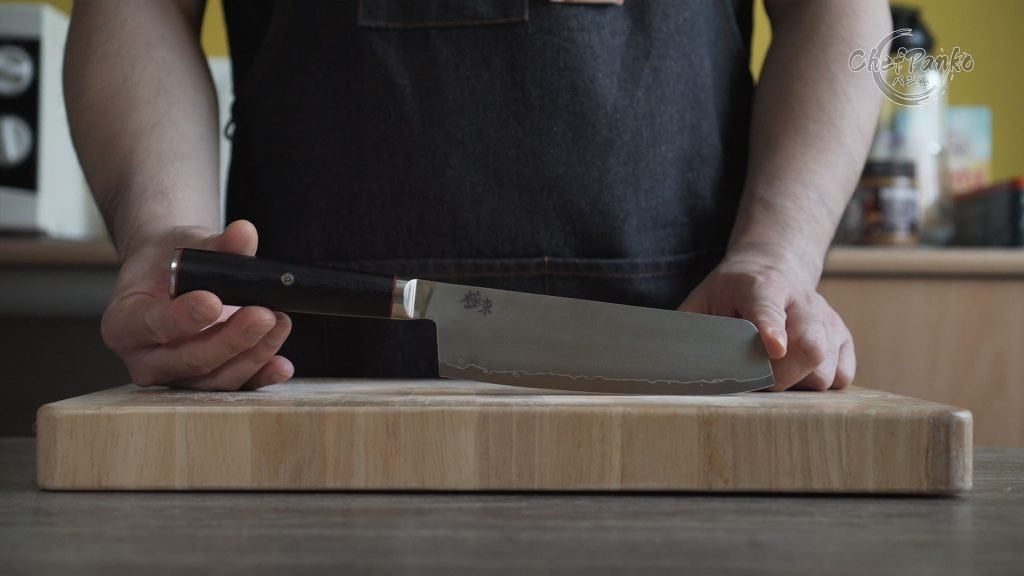
🛒S H O P:
N O T E S:
I think that the reduced price is temporary or they will stop including a free Saya. The price of this Dongsun AUS10 vegetable cleaver was $40/45 when I ordered it and that included free shipping and a free Saya.
▶ If you want to know what knife you should buy you can read the following article ''Choosing your knife''. ▶ On my youtube channel, I have reviewed a lot of different knives. You can watch the playlist by clicking here. ▶ Click here, if you want to search for other kitchen knives on: Amazon. ▶ , if you want to search for other Chinese knives on . ▶ Check out my gear on Kit: https://kit.co/ChefPanko ▶ Check out my recommendation on Amazon: https://www.amazon.com/shop/chefpanko Full Disclosure: If you purchase from these links I get a small commission that goes towards supporting the channel and website. As an Amazon Associate, I earn from qualifying purchases ▶ If you have any questions about Japanese knives made in China or about some of the brands feel free to ask it in the comment section below. Thank you for your support and feedback. ▶ Want to work with me? Please use the contact form by clicking here.
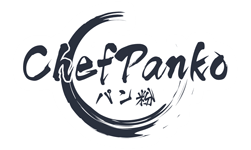
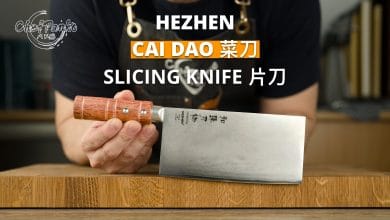
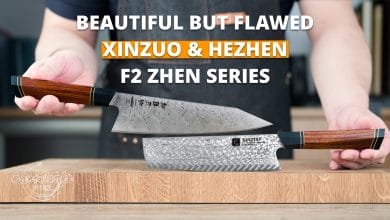
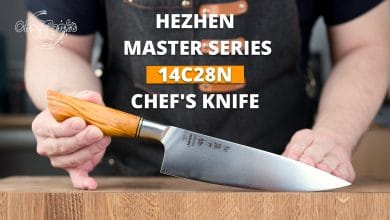
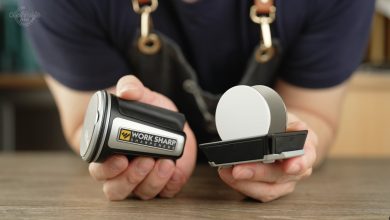
What do you mean that we shouldn’t use it to cut hard cheese and bread? You mean violent chop? Pretty much useless knife if it’s fragile as a ceramic blade. 🤣
Also saw the comment on Youtube 🙂 but for everyone else that has the same question:
While we eat a lot of cheese in the West, the Japanese people with the old tradition don’t consume cheese or dairy. With the fusion and modernization of countries, you slowly see more and more diary in Japan (Pizza, Pasta, etc.).
You now see that Japanese knives are adapting to the western cuisines; (western handle design thicker knife, cladding compared to the traditional Japanese knives and single bevels)
This knife, particularly (60 HRC), should be able to go through hard cheese.
The problem is that high Rockwell knives around 61+ have longer edge retention but sacrifice durability.
So an accidental twist combined with a thin edge and high Rockwell (even 60HRC) will result in an increased rate of chipping due to improper use.
Soft cheese causes a problem too since the softer cheese clings onto the knife, and the thin cutting edge cant handle the drag and will get multiple stress fractures.
Hard cheese, if accidentally twisting the knife while the knife was still in the cheese block, can cause chipping.
To avoid multiple stress fractures around the blade, they have added softer cladding to protect the core.
But this also means that you should not use the knife to crush the garlic, especially if done in high volume or tenderize meat with those kinds of knives.
The multiple stress fracture will build up over time, and especially knives without cladding can suddenly break.
Meanwhile, softer knives like the german chef’s knives are softer, around 58 Rockwell or lower, which can handle any abuse.
The edge will roll rather than chip or break, but it sacrifices edge retention/sharpness for the increased durability since it is softer.
To reduce drag on soft cheese, you have cheese knives with holes so that the cheese won’t cling to the blade.
For this reason alone, I always have a beater knife (a cheap knife with soft steel). When I’m at home, I don’t always cook occasionally, I have a frozen pizza, and I don’t have a pizza cutter, so I use my softer cheap knife to cut through it. I basically use it on things that I will never slice or cut with a high carbon thin Japanese-styled knife.
Hope that this explains why I advise against going through the cheese and other hard food.
As with bread, the hard crust is unpredictable and sometimes can be very hard, therefore they have a serrated bread knife with an asymmetrical grind. The teeth bite in the crust and the asymmetrical design adds durability and will saw through the softer layer.